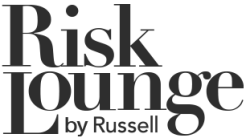
The rise in the use of new technology in the power generation industry is seen as the biggest risk for risk managers.
The Marsh Power Forum attracted 150 risk managers to Istanbul and focused in the biggest threats faced by risk managers form power firms in Europe, Middle East and Africa (EMEA) region.
It polled delegates on their biggest concerns and they identified new technologies and environmental responsibility.
The aim of the event hosted by the broker was to examine how the power sector in Europe, Middle East and Africa (EMEA) can manage and mitigate risks associated with growing energy demands, on the one hand, and an increased corporate and regulatory environmental commitment on the other.
Mark Pollard, Head of Marsh’s Industry Practices in EMEA, commented: “On a global scale, coal is growing not only in absolute terms, but also relative to other generation sources. In an attempt to mitigate the environmental impact, new technologies are being introduced, and existing technologies are being pushed towards new frontiers. These developments change the risk profile of the industry”.
Marsh said; “The power sector is under increasing pressure from investors, regulators and other stakeholders to demonstrate a tangible commitment to green energy. However, despite this commitment, it is predicted that coal fired generation will still represent over 44% of the mix of global energy production by 2030. This is almost double its 2007 total level.
The forum examined, in depth, the evolving risk profile of the power sector from the point of view of many stakeholders: manufacturers, operators and financiers.
“The increasingly important role that coal power generation will play on the global stage means that innovation within this sector is key in order to improve efficiency and lessen the environmental damage,” added Mr Pollard. “Marsh advocates innovative risk management and mitigation strategies which anticipate and meet these developing requirements. These include strategies to cope with the increased demands on power generation plants to capture and store carbon emissions, as well as management of stored carbon.”





